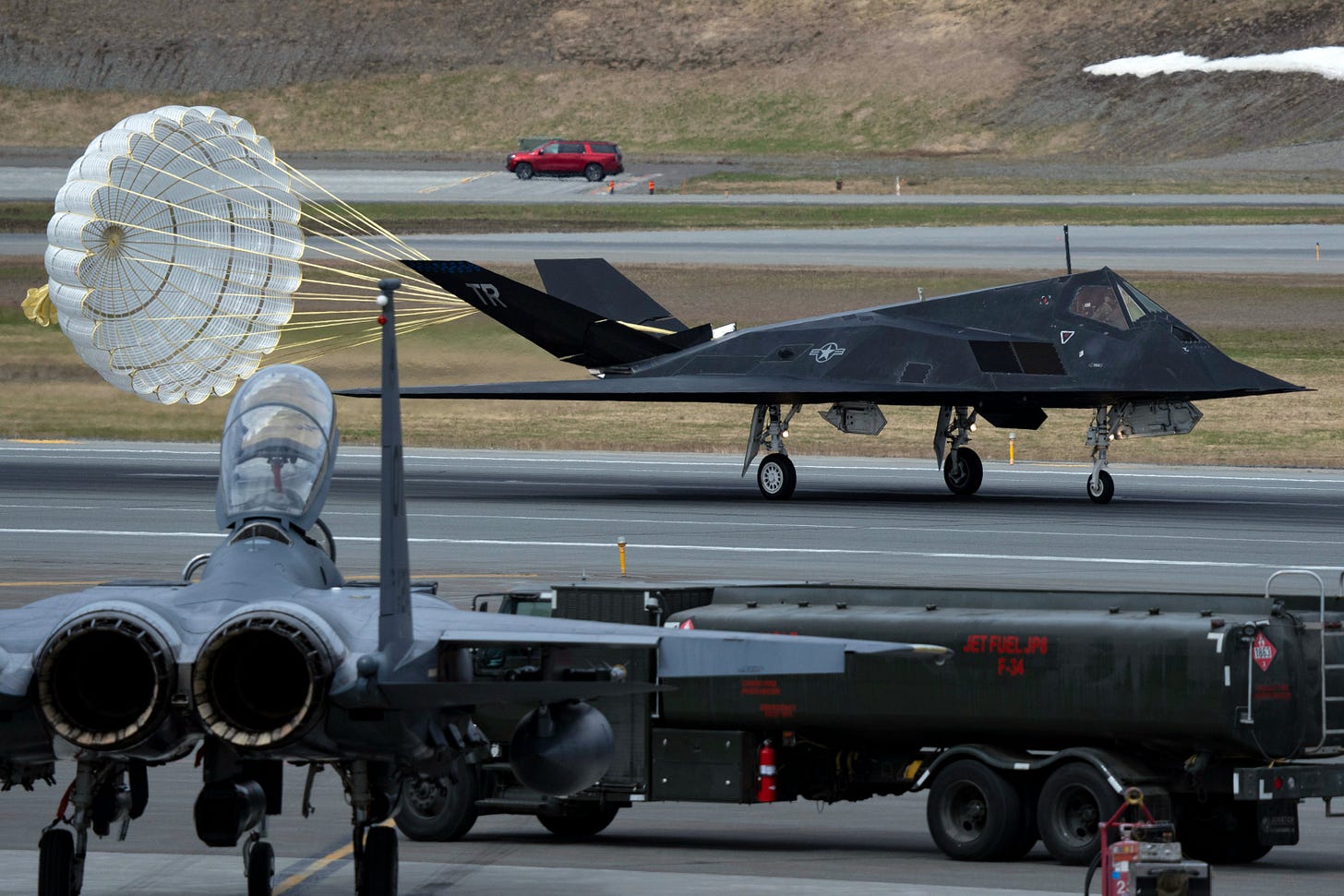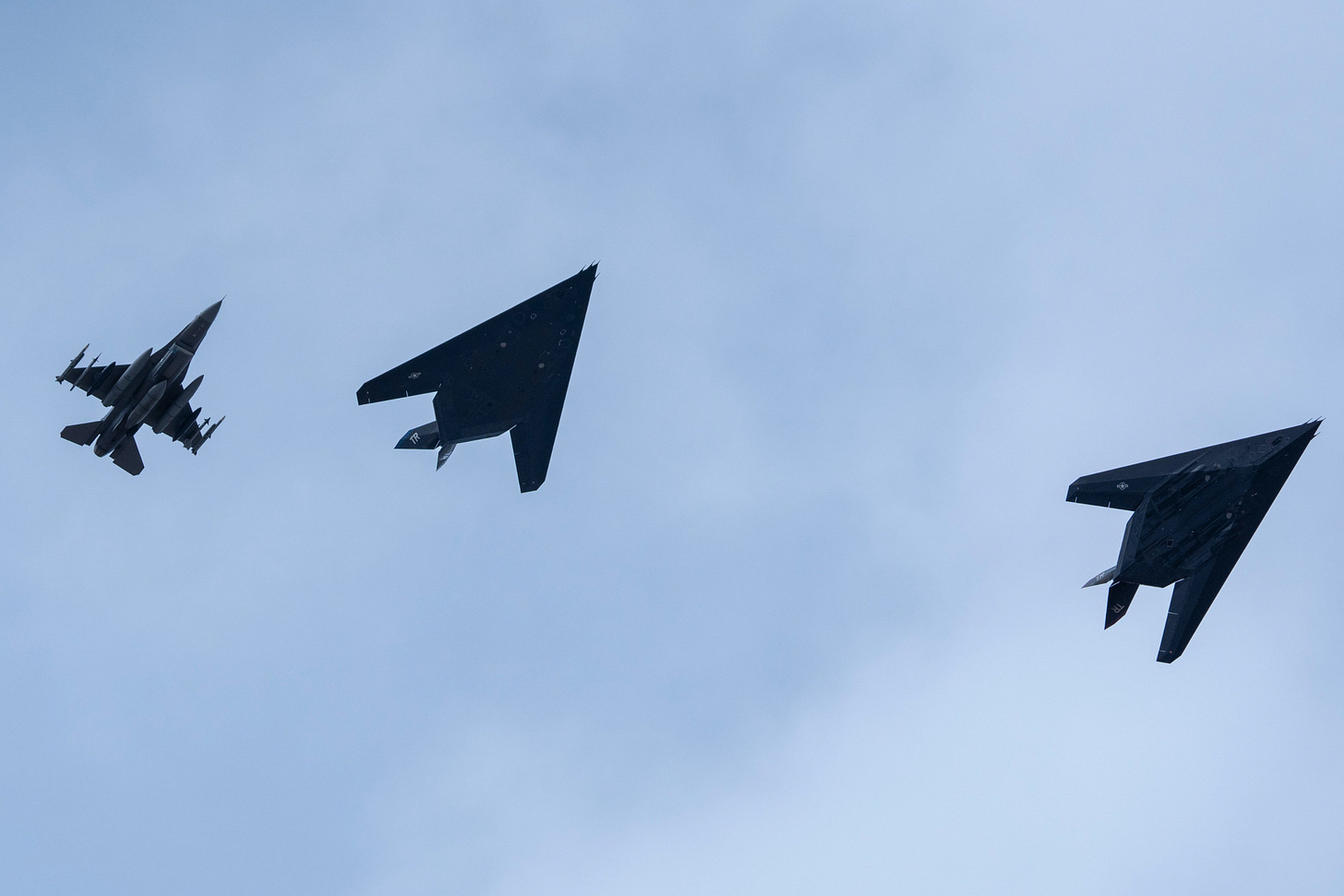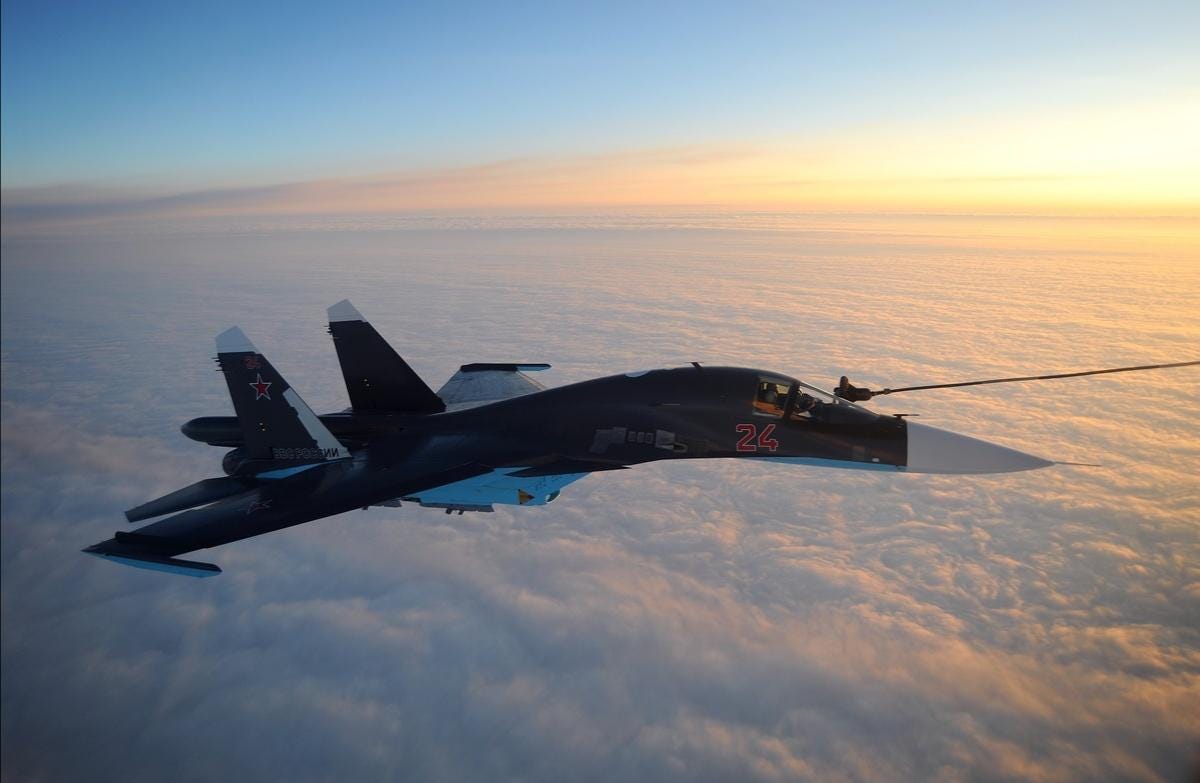Last week, Alaska’s largest military exercise, Northern Edge 2023 culminated after 16 days. The exercise was held at Joint Base Elmendorf-Richardson and Eielson Air Force Base. Over 10,000 U.S. service members were involved in the exercise. Aircrew from the United Kingdom and Australia also participated in the exercise. More than 200 aircraft were involved in the exercise, including an unspecified number of F-117 Nighthawks. The F-117 was America’s first stealth fighter aircraft, it was retired from service around 15 years ago. The U.S. Air Force confirmed the participation of the jets by releasing pictures of the “Black Jets” from the exercise. Other aircraft from the U.S. Air Force that participated in the exercise were the A-10, F-15, F-16, F-35, B-1 Bomber, C-17 transport airlifter, KC-135 air-refueller and the E-3 AWACS. The U.S. Navy and the Marines were also part of the exercise, they deployed F-18 Growler and F-35 respectively. Meanwhile, the Royal Air Force deployed its F-35s, A-400 and C-17 transport airlifters, and KC-30 air-refueller. The Royal Australian Air Force participated with its F-35s and E-7 AWACS.

Analysis
Northern Edge 2023 focused on joint-military cooperation between the Air Forces of U.S, UK and Australia, along with the U.S. Navy and Marines. This was aimed at honing the inter-operational capabilities of the AUKUS Group. AUKUS is a tri-lateral security pact between Australia, the United States and the United Kingdom. During the exercise, the participants focused on war-time communications and munition firing, while testing new technologies and strategies for operations. A realistic war-like training environment was created in Alaska, covering the spheres of sea, land, air, and space. However, the major highlight at the exercise were the new tests that were conducted on weapon systems. Testing was conducted on the F-35s of all three Air Forces. These aircrafts were recently upgraded with a new Operational Flight Program, designed to provide greater software feedback during realistic threat environments. Meanwhile, American F-15s tested the Eagle Passive Active Warning Survivability System, or EPAWSS, which allows the aircraft to jam enemy air-defences while increasing survivability of the aircraft during strike missions. The USAF tested this by seeing how close F-35s could get to the enemy while data-linked to F-15s which were engaging their EPAWSS. Additionally, the MQ-9 drone was also involved in the exercise. It sported a new targeting pod and Reaper Defence Electronic Support System to carry-out anti-jam and anti-spoof operations.
However, the belle of the ball was the F-117 Nighthawk as it flew an unspecified number of operations throughout the exercise. According to the Aviationist and The War Zone, the stealthy Nighthawk sported removable radar reflectors. These are meant to increase the Radar Cross Section of the aircraft. This is not new for the aircraft, as it has flown with radar reflectors in the past. The aircraft possibly played aggressor and defender roles1 while being accompanied by non-stealth aircraft. This may have been done in order to train F-35 pilots, particularly from the UK and Australia against stealth fighters. AUKUS is emerging as the most important Western security pact after NATO. With the ongoing Russia-Ukraine war, NATO is largely pre-occupied with Moscow’s aggression. However, AUKUS’ primary focus is to counter the rising threat from an assertive China. This can be inferred from their primary objective, which is to “Uphold Peace in the Indo-Pacific Region”. Naturally, AUKUS would want to practice against the threat from China. The deployment of the F-117 with radar reflectors could have been to enact the role of PLAAF’s flagship stealth fighter, the J-20. The radar reflectors reduce the stealth of the F-117, allowing it to create the radar signature similar to that aircraft with low stealth competence. Though the J-20 is considered stealthy, it does not match the stealth capabilities of the F-35 and the F-22. In fact, Indian Air Force Su-30 jets have reportedly tracked the J-20 on their radar, while the J-20s were conducting routine sorties near the Tibetan border. Though the F-117 can’t be compared to the J-20 in terms of its mission and weapon capabilities, it can be used to train pilots for future encounters with the J-20. Additionally, it is important to note why the F-117 flew in an exercise where only AUKUS participated. This is because the nuclear group is closer than ever, having signed a massive nuclear submarine pact worth $368 Billion, back in 2021.

It is interesting to see how the F-117 holds relevance for the U.S. to this day, despite being retired for over 15 years. It speaks volumes of what it’s designers at Skunkworks were able to achieve with the machine’s stealth capabilities. Will this become a recurring trend, where foreign air forces participating in the U.S. get to fly against the F-117? Definitely not. Northern Edge 2023 seems like a planned initiative to give friendlies the chance to go up against the F-117. The exercise has enabled allies to hone their skills against the threat of other stealth aircraft. Meanwhile, America saved flying hours on its currently operational stealth aircraft by fielding the retired F-117. The take-aways for British and Australian Pilots will be huge from Northern Edge 2023, and there is no doubt that Moscow and Beijing closely monitored the two-week long heightened air activity over Alaska.
Short Take-Offs
Headlines from the world of aviation.
An F-18 fighter jet of the Spanish Air Force crashed at an airbase near the Zaragoza city. The pilot managed to eject safely as the aircraft fell withing the perimeters of the airbase, bursting into flames. The pilots sustained injuries to his legs as he initiated ejection at low altitude. Spain’s Defence Ministry is yet to disclose the cause of the crash.
Two pilots died after an MD-350 helicopter of the Afghan Air Force crashed in the Samangan Province. The helicopter was on a patrol mission. It was conducting low-level operations when it struck power lines and crashed.
Malaysian Air Force has inked a deal with the Korean Aerospace Industries for the acquisition of 18 FA-50 aircraft. The purchase is estimated to be worth $920 Million. The deal was finalised at Malaysia’s ongoing air show, LIMA 2023. The country will use the FA-50 for fighter lead-in training and combat roles. Korea’s FA-50 trumped India’s Tejas to win the final round of Malaysia’s Light Combat Aircraft requirement.
Still of the Week





Rohan,
Well analyzed. USAF has been exercising with RAF using F-22/ 35 for many years. Even F-117 project has eight RAF Test Pilots based at Palmdale CA. Usage of F-117 is interesting, most probably as target with embedded stealth. It would allow, close to realistic scenario build up for Indo- pacific operations against PLAAF/ PLAN.